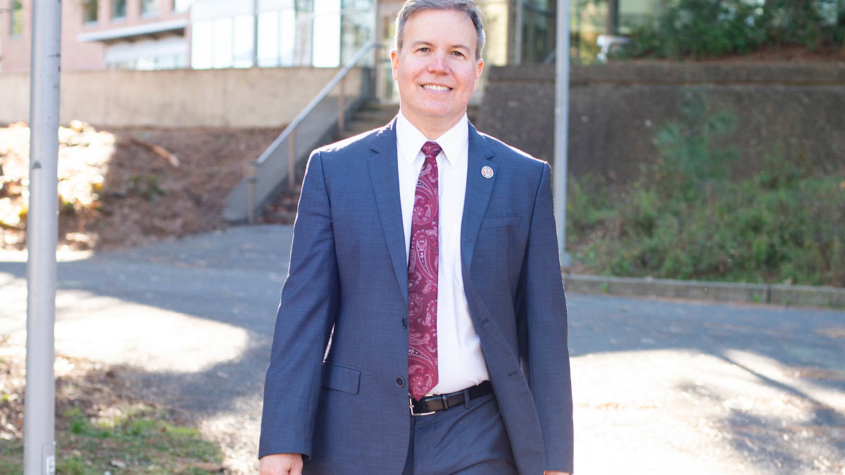President corrects misperceptions on fiscal realignment
SOU President Rick Bailey reached out to students and employees this week to correct various misinformation and misperceptions that have circulated among the campus community regarding the cost-management portion of the university’s four-pronged fiscal realignment plan.
The bottom line is that students and others should expect “a robust mix of academic programs and student experiences” at SOU for the foreseeable future, President Bailey said.
He specifically pointed out that the only academic program proposed for elimination at SOU is the master’s degree in Environmental Education, and all current students in that program will be able to complete their degree requirements.
“No other programs are being proposed for elimination,” he said. “Rather, our intent in identifying budget reductions was to more tightly focus some academic programs to better align with the needs of students as they graduate and begin or resume their careers.”
For example, the Theatre Program – where several inaccuracies have circulated among concerned students, staff and patrons – will continue to be a key piece of the SOU identity and an important element of the university’s overall offerings in the creative industries. The program is not one of SOU’s largest but its students, staff and patrons are vocal in their support.
“Discussions have been underway with the (theatre) department for the past several years about how we may be able to better integrate and create synergy among programs related to theater, film, video, gaming, concerts and special events – boosting the career opportunities for graduates who want to work in the creative industries,” President Bailey said in this week’s campus message. “The current fiscal realignment process accelerated those discussions.”
He also made clear that the university’s cost-cutting proposals do not include widespread layoffs. Almost 82 full-time equivalent positions have been identified for elimination by summer 2024, but 59 of those reductions will be accomplished through a combination of recurring job vacancies, retirements, voluntary departures and non-renewable contracts.
“The balance will come from current employees whose positions are proposed to be eliminated, and we are acting with openness, kindness, compassion, and support as we move through this process,” the president said.
He added that the current employees whose positions are proposed for elimination will not be identified by name, out of respect for their privacy, but those impacted positions will soon be made public. The positions are spread across faculty, classified and unclassified employee groups, with care taken to avoid or keep to a minimum any impacts to student experiences or academic opportunities.
President Bailey said he expects additional feedback and potential adjustments as he and other campus leaders continue to address the university’s structural deficit. The cost management plan will be presented on March 17 to the SOU Board of Trustees, and the board will take action on the plan at its meeting on April 21.
Cost management is one of four “planks” that make up SOU’s overall fiscal realignment strategy. The other planks, or elements, of the plan are to build a system of support for research and other projects to be funded by external granting agencies and organizations, leverage the ongoing surge in philanthropic giving to SOU, and diversify revenue by pursuing entrepreneurial opportunities such as solar power production and an on-campus senior living facility.
“Our ultimate goals are to repair the structural flaws in SOU’s financial model that have resulted in recurring budget crises over the past 25 years, and ensure continued access and academic success for our students,” President Bailey said. “We will achieve both by reducing SOU’s reliance on tuition and state appropriations.”



